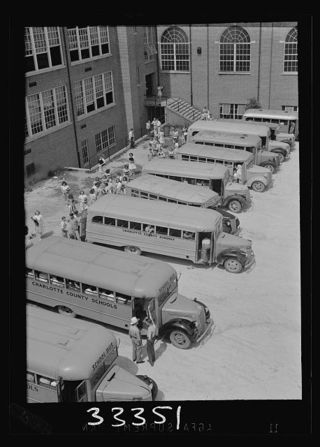Attention
The School Bus Ride Is Part of the Problem
Longer bus rides mean waking up earlier and in some cases waiting in the dark.
Posted July 24, 2019
There is perhaps no more iconic representation of American public schools than the yellow school bus. I never rode a school bus when I was a child, as my first school was close enough to walk, and later my schools were close enough to ride my bicycle. In high school, we lived across town (2.5 miles) and I rode with older students who had their own cars. I honestly cannot remember if any students rode a school bus to any of my schools as my town was small, but I know that many students in the separate county district rode buses.

School buses first came to be used extensively in the 1930s and 1940s. The caption from the Library of Congress photograph at left, taken in 1943, is "Keysville, Virginia. Randolph Henry High School. Buses bring students from miles around as the school covers an area of 496 square miles. Some children come as far as 30 miles to school in one of the 17 buses, some of which are driven by seniors."
More children began to ride buses during the 1960s and 1970s when busing became a means to achieve integration of schools. In later decades, consolidation of districts meant that more children rode buses. In the current era, buses usually pick up one group of children very early, drop them off, and return to neighborhoods to pick up a second group. In most cases, older students have been picked up first, and younger students last. But since the movement to start school later began, advocates have focused almost exclusively on having adolescent start times moved later. Very little attention has been paid to the consequences of the most frequently exercised option of having younger students start earlier. One consequence is that because many children must begin their bus ride an hour or more before school begins, the first pick up time is often before 7 am. After changes in schedules are made, parents of elementary school children are often distressed that their children must wake and get ready for school much earlier than before. And in too many cases, pickup time is before sunrise, so children are waiting outside at the bus stop in the dark when there are safety concerns.
The emphasis on start times of schools is appropriate, given that the objective is for children and adolescents to have more opportunity to sleep longer. But the real start of the school day is determined by the bus pickup time and the duration of the ride, not the first bell. As far as I know, there is no school start time research that has taken those considerations into account.


